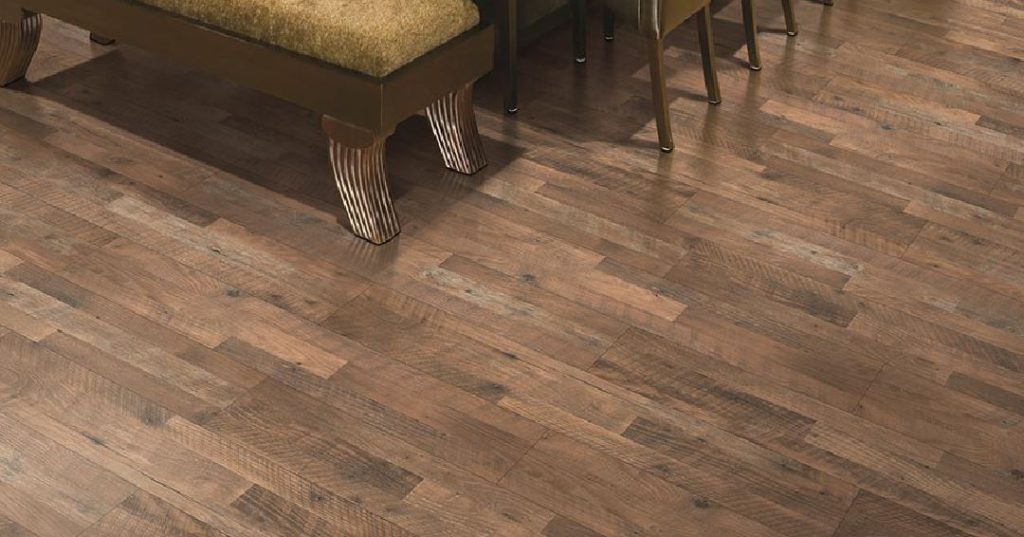
Picture this: You’ve just arrived home after a long day of work. You open the front door of your cozy yet spacious bungalow (or vintage farmhouse, or tidy cottage, or secluded cabin – your choice) and set down your keys and coat in the entryway. You head into the main living area, open concept, of course, where you’re greeted by the sight of the afternoon sun filtering through the gauzy curtains and casting a golden hue over the gorgeous, distressed wood flooring of your living room.
You make your way into the kitchen to get dinner started, noticing that someone has spilled water on the floor. Not a problem, you think as you grab a towel to wipe it up. The vinyl plank floor looks nearly indistinguishable from the weathered hardwood you might find in a rural farmhouse kitchen, yet the product you chose is completely waterproof. A quick swipe of the towel and it’s good as new.
After the evening’s activities are complete, you retire to your bedroom, a tranquil retreat awash in soft, muted tones. Although you’ve chosen to place an area rug near the bed as part of the decor, you reflect on how it’s not really necessary thanks to the comfortable and beautiful wood laminate you’ve chosen for the bedrooms.
If this all sounds like heaven to you, you probably find yourself drawn to the timeless allure of rustic design. Rustic home flooring is the perfect choice to infuse your space with that warmth, character, and natural beauty that’s so appealing about the bygone days.
At Empire Today® we absolutely adore rustic design, and we’re excited that it’s grown in popularity over the years. As we delve into the rustic flooring trend, we’ll explore the various styles, materials, and design possibilities that make this enduring aesthetic a true classic.
In an age where technology dominates nearly every aspect of our lives, it’s hardly surprising that more and more people are being drawn to the rugged appeal of rustic interior design, both for their homes and workplaces. The authenticity and connection to nature of rustic flooring can serve as a powerful counterbalance to our increasingly digital experience.
Rustic interior design is deeply rooted in the unique pioneering history of the U.S. Early settlers brought very few belongings as they left larger cities to disperse throughout the rugged expanse of the wild west. When it came time to build and furnish their homesteads, these pioneers had no choice but to rely on local, natural materials. This resourcefulness not only shaped their living and working spaces, but also fostered a design aesthetic that celebrates the beauty of simplicity and the authenticity of the American frontier.
Rustic flooring is so much more than just a trend; it’s truly a tribute to the skilled hands that have shaped our history!
These days most of us aren’t chopping down trees to build our own cabins and furniture, but that doesn’t mean we can’t create the same atmosphere of natural, tasteful simplicity found in the rustic homes of yore. Understanding where rustic design elements originate can help define the overall aesthetic.
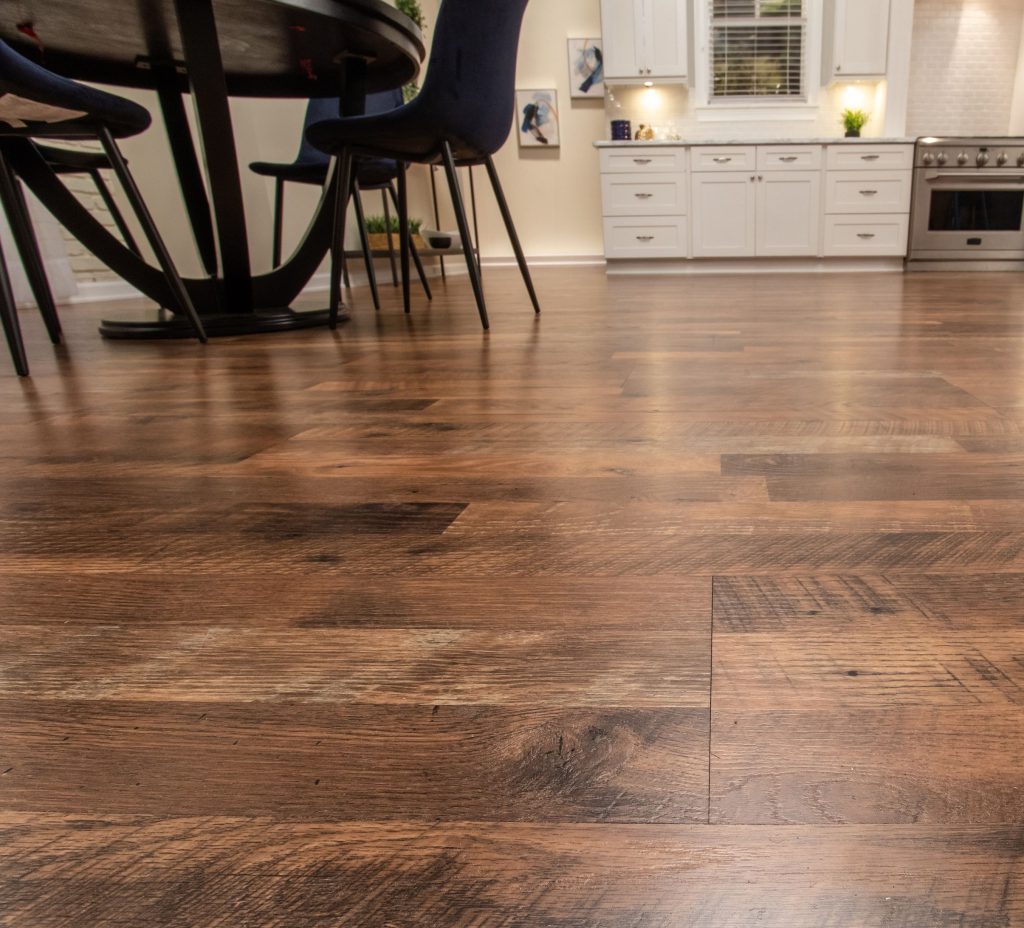
When it comes to interior design, trends come and go (think the shag carpeting and avocado green appliances of the 1970s, or the beige walls, floral prints, and wicker furniture of the 1990s). One of the most exciting aspects of rustic flooring is that its beauty and simplicity transcends short-lived design trends. Rustic flooring compliments a huge variety of interior design styles and can be adapted to suit different aesthetics such as traditional, farmhouse, industrial, or contemporary, making it a much safer investment than those massive, wooden entertainment centers that dominated living rooms circa 2002!
Welcoming nature into our homes has never been more important than in today’s fast-paced world, where maintaining a connection with the great outdoors can be a real challenge. In fact, studies have shown that exposure to natural elements, such as wood, plants, and stone, can actually lower cortisol and increase feelings of relaxation – something most of us could use! Rustic flooring’s enduring appeal lies in its ability to invoke those feelings of peace and tranquility you get from an afternoon in the woods, without ever leaving your living room.
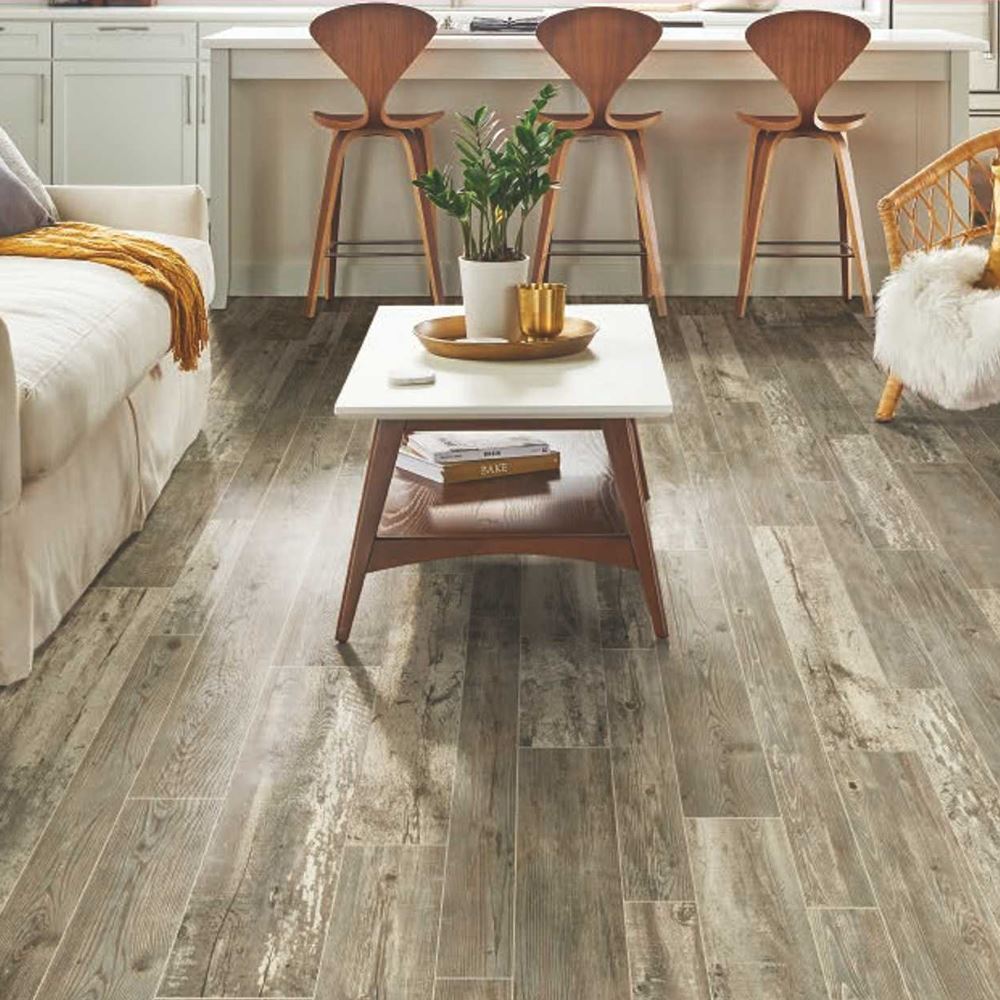
Unlike the pioneer days, when the only building materials available were whatever was growing nearby, we offer a wide variety of rustic floor products to choose from. Finding the perfect floors to fit any aesthetic, budget, and lifestyle has never been easier.
Newer wood can take on those gorgeous, timeworn characteristics by using techniques such as hand-scraping. In hand-scraping, also known as hand-planing, a special tool is used to scrape the surface of the wood to create a more textured, stately appearance. Hand-scraped wood flooring is often used for restoration projects or rustic homes.
If sustainability is your main concern, look no further than reclaimed wood. Reclaimed wood is typically salvaged from older commercial buildings, vintage barns, or other demolished structures. Besides the fact that it’s an environmentally friendly flooring option, reclaimed wood is also prized for its unique and character-rich appearance. Whether it’s nail holes, knots, saw marks, or naturally weathered textures, each plank has a story of its own to tell. Reclaimed wood is typically more expensive than traditional new wood or engineered flooring due to the labor-intensive process of sourcing, salvaging, and preparing the wood.
Wide plank floors are known for their stunning visual impact. The wider planks (typically around 5” or more) showcase the grain patterns, color variations, and subtle contrasts of the wood and can create a sense of spaciousness in a room. Wide plank flooring has historical roots and is often associated with American and European homes. Thanks to their more traditional look, wide plank flooring is a popular choice for anyone seeking to add a rustic element to their home.
The earthy, textured appearance of stone-look floors aligns with rustic design’s emphasis on natural elements. Stone-look flooring is typically made from materials like porcelain or ceramic tile, luxury vinyl tile, or laminate that are engineered to replicate the texture, color, and veining patterns found in natural stone. Stone-look flooring is typically highly durable and resistant to wear and tear, and is relatively low maintenance and budget-friendly compared to natural stone.
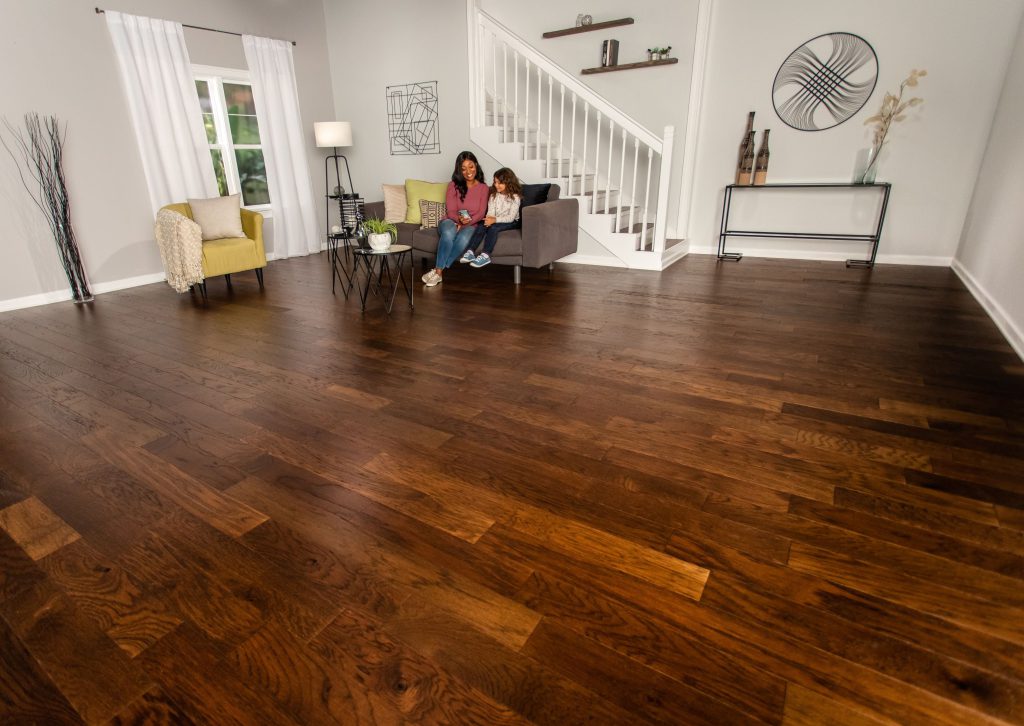
Selecting the ideal rustic flooring for your space is a process that goes beyond aesthetics alone. Finding the right product means striking that perfect balance between your design vision, practical needs, and the unique character of each flooring option.
The sheer variety of rustic floor products on the market can make finding the perfect fit feel a bit overwhelming. Understanding your own personal style will help you narrow down your options and make the sometimes daunting task of selecting floors a more enjoyable experience. When you schedule an appointment with Empire, a flooring professional visits you in your home where they are better able to help you narrow down the choices.
Thinking about the function of the room or rooms where you plan to install your rustic flooring is key to finding the right fit. Do you have kids, pets, or both? Which rooms get the most traffic, and which might be exposed to topical moisture? Rest assured you will be able to find the perfect rustic floor product for every area of your home.
Today’s rustic floor products are nothing if not versatile. Not only are there a variety of materials to choose from, the color palette of rustic flooring offered at Empire® ranges from rich, earthy tones like deep browns and warm reds, to lighter, more weathered hues such as soft grays.
In terms of patterns, rustic floors can showcase diverse arrangements of planks or tiles. These patterns can be customized depending on the vibe you’re going for – whether it’s the classic farmhouse look, a contemporary loft, or a cozy cabin retreat.
The finish of rustic floor products is yet another aspect that enhances their appeal. Matte finishes provide a subtle, understated elegance, while semi-gloss or high-gloss finishes offer a sleek, polished look. And of course, the popular distressed/hand-scraped finishes create that charming, weathered appearance and highlight the natural character of the wood.
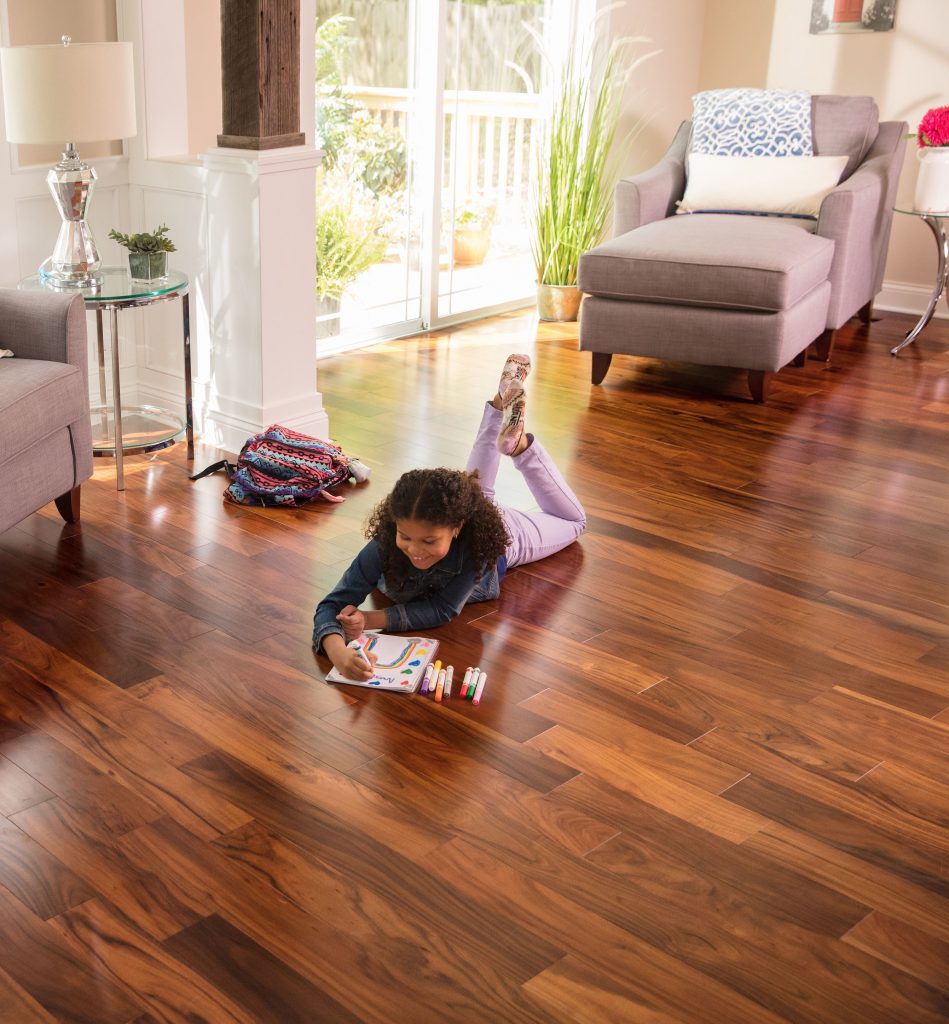
Rustic flooring is not only durable, it’s also relatively easy to maintain. As with any type of flooring, a little TLC in the form of regular cleaning and minimal maintenance will help keep it looking its best for years to come.
Cleaning your rustic flooring depends somewhat on the materials used to create the floor. However, these general rules apply to the care of most types of rustic flooring.
The warmth, charm, and enduring quality of rustic flooring can be a soothing balm to those of us craving a tangible connection to the natural world. The choice to incorporate rustic flooring into your interior design also means that no matter how your tastes change in the years to come, your floors will never look out of date or at odds with whatever decor you choose. So, whether you’re into mid-century modern or intergalactic chic in the future, your rustic floors will always be there to support you in style.
As we conclude our journey through the world of rustic flooring, it’s clear that this timeless choice is more than just a surface beneath our feet – it’s a statement of style, a testament to our eternal connection with nature, and a nod to the past. Whether you opt for the warmth of wide plank flooring, the inviting charm of distressed finishes, or the natural beauty of stone-look, the skilled flooring professionals at Empire Today can help guide you towards the choice that reflects your unique personality and the ambiance you wish to create.
Get the latest updates delivered to your inbox.